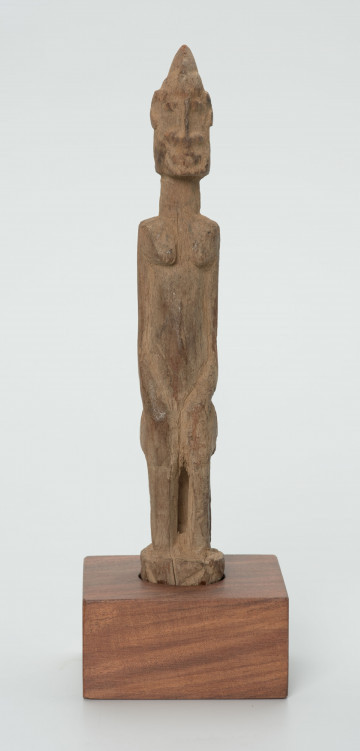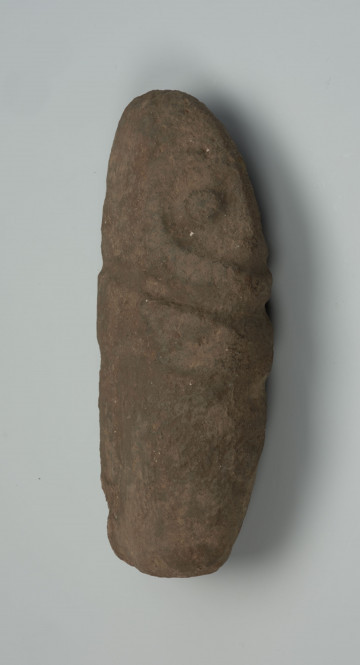
Figurine - ancestor
między 1901 — 1950
National Museum in Szczecin
Part of the collection: Collection of Dogonian art
Dogon art is created primarily for religious purposes. According to their mythology, the creator of the universe is the god Amma, but the inhabitants of the Bandiagara Escarpment pay little attention to him, concentrating instead on the various ancestors who are intermediaries between the living and the ultimate forces of the universe. It is with them that most of the Dogon rituals are associated. Among the ancestors, several categories can be distinguished. One of these is the first ancestors created by Amma - the four pairs of perfect twins from whom all humanity is descended. The next group, and the most numerous, are the deceased members of all the lineages called wagem, which translates literally as those who are far away. The last category is the various binu, ancestors who lived in times when humans were immortal.These ancestors are dedicated to one of the cults of life referred to by the same name. Altars commemorating the immortal ancestors are located inside special temples. These are small, clay constructions with an entrance facing west and a richly decorated facade. On the binu altars there are wooden figures leaning against the temple wall, small clay bowls, miniature ladders, iron hooks and bracelets and wooden domolo sticks. In myths describing an ancestor's first contact with his family, there is often mention of wooden carvings provided by the ancestor as proof of alliance with living descendants. The carvings found in binu temples are of various forms and sizes. They are believed to represent one of the immortal ancestors or the first priest, but according to some Dogon they represent different aspects of the Nommo deities, believed to be the ultimate source of binu spiritual power.
Ewa Prądzyńska
Author / creator
Dimensions
cały obiekt: height: 8 cm, width: 2,7 cm
Object type
figure
Creation time / dating
Creation / finding place
Identification number
Location / status

między 1901 — 1950
National Museum in Szczecin

między 1951 — 2000
National Museum in Szczecin

między 1951 — 2000
National Museum in Szczecin
DISCOVER this TOPIC
National Museum in Lublin
DISCOVER this PATH
Educational path